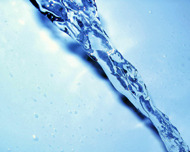How To Cook Rice
It's probably safe to say that just about anyone can cook rice with a rice cooker — for those who enjoy rice frequently, it's an indispensable appliance. But what if rice isn't an everyday staple? Then chances are, a rice cooker isn't stashed away somewhere in the back of the cupboard.
However, cooking rice in a pot is a basic technique that befuddles even some of the most seasoned cooks. Never fear, The Daily Meal is here.
Rice comes in many varieties, but the cooking technique remains the same (unless, of course, one is making risotto, which is another article). The cooking times will vary according to the starch content of the rice and whether one is cooking processed white rice or whole-grain rice.
Click here to see the Whole-Grain Rice Salad Recipe.
Photo courtesy of Stock.XCHNG/biewoef)
Measure out the water. The ideal ratio is generally between 1 ¼ to 2 cups of water for 1 cup of rice. Short-grain white rice, such as sushi rice, tends to contain more starch and turn soft and sticky with too much water, so it's probably a good idea to start closer to the drier end of the ratio. Long-grain white rice, such as Carolina or basmati rice, as well as brown rice, tends to require more water and so something closer to a ratio of 2:1 ratio is ideal.
Click here to see the Wild Rice Pilaf with Pomegranate Recipe.
Bring the water to a boil in a pot large enough to accommodate a doubling in volume. Add the rice and return to a boil just briefly. Reduce the heat to the barest simmer, season with salt, if using, and cover with a lid. Now the timing starts.
Photo courtesy of Stock.XCHNG/vierdrie)
Click here to see the Bibimbap Recipe.
Once it looks like almost all of the liquid is absorbed, pick out a grain and split it in half. Look carefully. If the center is still hard and white, it is not done yet. Continue cooking until the grains are cooked through in the center, adding about ¼ cup of water at a time as needed. Remove from the heat and cover with a lid. Let stand for 10 minutes for any remaining liquid to be absorbed again. If there is still excess liquid, it can be easily drained off using a colander.
That's it! With a little practice, it'll become second nature, like scrambling eggs.

